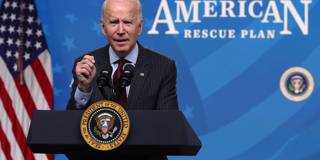Policymakers seeking to stimulate the economy must pay more attention than past Keynesians did to avoiding inflation and ensuring that job creation at home is not offset by a drain of production capacity abroad. If the Biden administration is wise, it will adopt two radical policy proposals that address both issues.
LONDON – US President Joe Biden has set out to emulate Franklin D. Roosevelt by spending huge amounts of money, something that FDR avoided doing until World War II. This threatens to trigger the sort of inflation that wrecked Keynesian economic policies in the 1970s.
Since January 2021, the Biden administration has spent or committed to spend $1.9 trillion for immediate COVID-19 relief, $2.7 trillion for investment and business support, and $1.8 trillion for welfare and education. This amounts to $6.4 trillion, or nearly 30% of US GDP. The $1.9 trillion already delivered through coronavirus spending will tail off, leaving $4.5 trillion, or about 20% of GDP, to be spent over the next ten years.
The spending will be financed largely by US Federal Reserve bond purchases, with tax hikes coming later. But will it represent the biggest mobilization of US public investment since WWII, or rather an inflationary splurge?

LONDON – US President Joe Biden has set out to emulate Franklin D. Roosevelt by spending huge amounts of money, something that FDR avoided doing until World War II. This threatens to trigger the sort of inflation that wrecked Keynesian economic policies in the 1970s.
Since January 2021, the Biden administration has spent or committed to spend $1.9 trillion for immediate COVID-19 relief, $2.7 trillion for investment and business support, and $1.8 trillion for welfare and education. This amounts to $6.4 trillion, or nearly 30% of US GDP. The $1.9 trillion already delivered through coronavirus spending will tail off, leaving $4.5 trillion, or about 20% of GDP, to be spent over the next ten years.
The spending will be financed largely by US Federal Reserve bond purchases, with tax hikes coming later. But will it represent the biggest mobilization of US public investment since WWII, or rather an inflationary splurge?